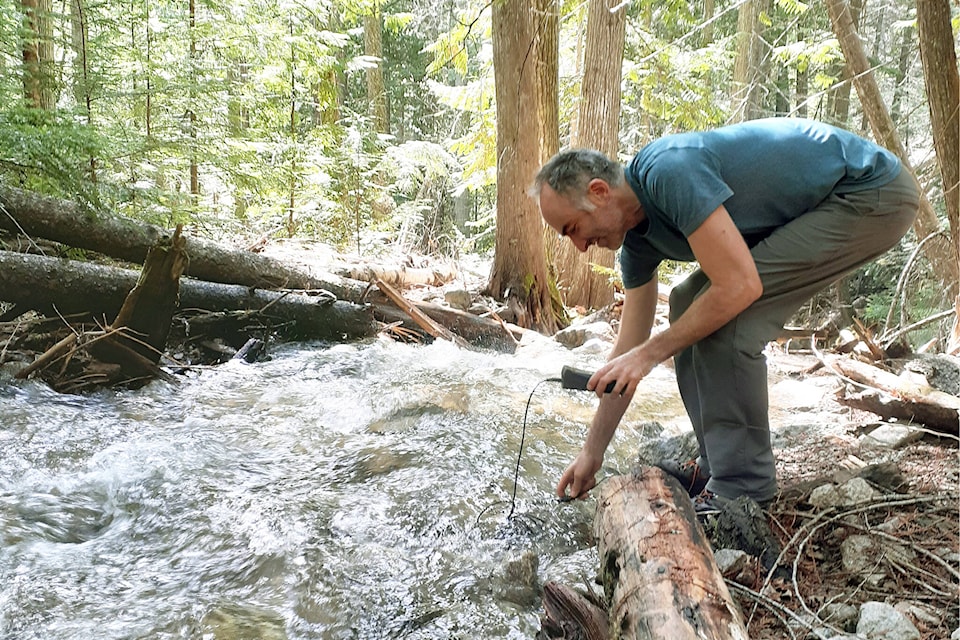Submitted by Kootenay Conservation Program
This article is the first of three in a series featuring the Kootenay Lake Local Conservation Fund, a local government service co-administered by the Kootenay Conservation Program.
It’s been eight years since the Kootenay Lake Local Conservation Fund (KLLCF) legacy began.
Recognizing the need to conserve the prized natural surroundings of their communities, property owners in Electoral Areas A, D, and E of the Regional District of Central Kootenay (RDCK) voted to start a fund in 2014 with the purpose of investing in local projects that would do exactly that.
Thanks to this innovative service, the KLLCF started disbursing funds in 2016. In the first year, the fund supported projects dedicated to protecting local bats, western toads, and osprey as well as restoring a large tract of local habitat for wildlife. This incredible effort was made possible by the $15 tax paid by each land parcel in the participating electoral areas and the rest, as they say, is history.
From 2016 to 2021, the KLLCF Directors approved 37 grants totalling $468,000. Not only has this funding conserved and restored biodiversity, but this local investment has helped raise over four times the original amount in additional grants and in-kind support for these projects (not including a multi-million-dollar contribution to a land acquisition project), which makes its way back into the community through the purchase of materials and supplies, jobs, equipment rental, and more. Conservation with a positive economic spin-off is a sound combination.
The range of leading-edge conservation projects supported by property owners in Areas A, D, and E through the Local Conservation Fund is nothing less than impressive given the small size and rural location of these communities. Additionally, every project that receives funding is evaluated by a volunteer committee of local natural resource professionals and experts to ensure it is technically sound and specifically reflects local priorities, which have been identified as: aquatic systems and conservation of water, wildlife, and habitat.
To those living in the Kootenay Lake area, conservation of water and aquatic ecosystems is particularly valuable, not just ecologically but recreationally and economically too. Given that, a number of projects have water conservation as their focus.
Kootenay Watershed Science (formerly known as the North Kootenay Lake Water Monitoring Project), is a long-term water monitoring program started by the Kootenay Centre for Forestry Alternatives and managed by Living Lakes Canada that collects water data through a network of stream and temperature monitoring stations to better understand how watersheds are reacting to climate change so communities can better prepare for increased hazards (mudslides, flooding, water shortages, etc.) and plan for sustainable development.
The Harrop Wetland Enhancement Project located in Harrop’s Sunshine Bay Regional Park is a multi-year restoration project led by the Friends of Kootenay Lake Stewardship Society that is restoring critical habitat for a number of at-risk species including western toads, blue herons and painted turtles and others that depend on the wetlands along the West Arm of Kootenay Lake. Additional benefits of the project include water filtration, floodwater storage, climate resilience, removal of invasive species and wildlife viewing opportunities for the community.
Community Monitoring and Removal of Aquatic Invasive Species, a community science project led by the Central Kootenay Invasive Species Society. Given aquatic invasive species can have significant effects on water quality and aquatic ecosystem health, this project is working directly with lakefront property owners and other volunteers to closely survey and monitor for aquatic invasive species, in particular zebra and quagga mussels and Asian clams, and to remove targeted invasive plants.
“The work done by these non-profit organizations to maintain the health of Kootenay Lake and its surrounding watersheds is invaluable, and the financial support provided by the KLLCF has been critical to its success,” says Juliet Craig, program manager for the Kootenay Conservation Program.
“Local property owners who are paying into this fund are making a direct investment into the natural legacy of Kootenay Lake.”
To learn more about the projects funded by the KLLCF, visit kootenayconservation.ca/kootenay-lake-local-conservation-fund.
